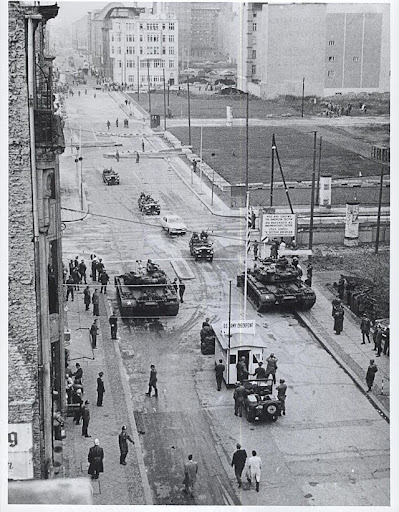

Rescuing Americans from East Berlin
William J. Dyess, a native of Troy, Alabama, and a University of Alabama graduate, joined the U.S. Foreign Service in 1958, eventually becoming America’s chief liaison to Soviet authorities in East Berlin in 1968. Dyess arrived in Berlin at the height of the Cold War, when the city was starkly divided, with East Berlin controlled by the communists and West Berlin controlled by the Western powers, including the United States. Dyess was tasked with representing American interests in East Berlin, particularly when American citizens were arrested or detained by Soviet or East German authorities.
“I would go over frequently to East Berlin to see Soviet authorities and I had a Soviet counterpart,” Dyess recalled. “He was quite ready to speak Russian, and I was quite ready to speak English–each of us insisting that Berlin was not a Russian city or an American city respectively. We compromised and spoke German.”
Dyess recalled a particularly dramatic case when a U.S. Army lieutenant was arrested by East German authorities when they caught him trying to cross to the West with two people hidden in his trunk. One turned out to be an informant who tipped off the East Germans. While the young lieutenant was indeed guilty of running a lucrative side hustle smuggling people past the Berlin Wall, Dyess was not going to leave him in the hands of the East Germans and the harsh treatment he would undoubtedly face in prison.
Dyess knew that he had a responsibility to protect the rights of American citizens abroad, even those who had broken the law. He made 14 trips to the Soviet Embassy in East Berlin in just two days, demanding the lieutenant’s release into American custody. The U.S. Government would handle his prosecution, he told them.
“I sometimes think that they turned him over just to get rid of me, because they were tired of seeing me.”
Willam Dyess
After long, tense negotiations, his persistence paid off: the Soviets agreed to turn the lieutenant over to Dyess at Checkpoint Charlie, the crossing point between East and West Berlin, in the middle of the night. “I sometimes think that they turned him over just to get rid of me, because they were tired of seeing me,” Dyess recalled. “I camped outside their embassy.”
Nevertheless, Dyess met Soviet officials in the dark of night, taking custody of the lieutenant, saving him from trial and imprisonment in East Germany. Dyess developed a reciprocal understanding with the Soviets and was able to get Americans released because he did the same for them. “They did it for me because I had helped them out in the West,” Dyess explained. “They have somebody over in the West, they get drunk or whatever, and they didn’t want him to be turned over to just anybody. So I’d go–maybe three or four o’clock in the morning and rescue him and get him back to ‘Checkpoint Charlie’ to turn him over to the Soviets.”
Thanks to his persistence and professionalism, Dyess saved dozens of Americans from uncertain fates in East German custody.
Read more about Dyess’ experiences in his oral history.

